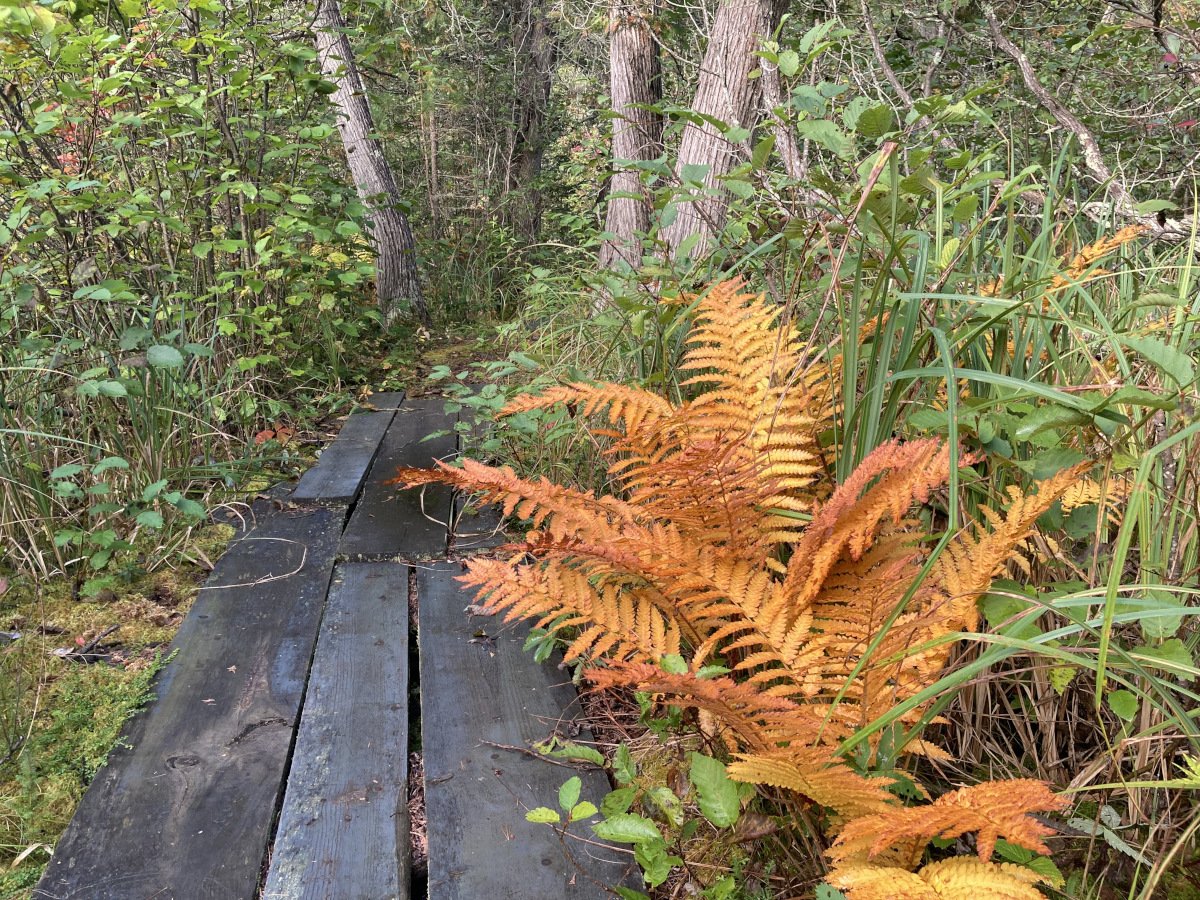Strategic Revision—Be Ruthless
A lovely fern next to the footbridge over the bog behind my house.
My friend Louise visited me for a few days last week. She’s working on an MFA in an online program. For one of her classes this fall, she’s written a personal essay about a camping trip she took in Minnesota’s Northwoods years ago.
She’s worked on revising it herself, but told me that she finds revising really challenging. (Amen. But for me, revising is way more fun than drafting from scratch.)
She’s been reading her short essay aloud, backwards, to focus on each individual sentence. This can be a great approach once you know the big picture issues like structure and character are solid.
I asked her if she’d like me to read it aloud to her (in regular order, not backwards). It can be enlightening to hear where someone unfamiliar with a piece stumbles or pauses or puts emphasis in a place the writer didn’t expect.
Since I’d never seen this piece before, I mostly concentrated on reading her words and understanding what was going on in the story. When I was finished, I asked her how it felt to hear it aloud. She could hear some clunky sentences, she said.
Louise is a former newspaper journalist. (She did that for several years before going to veterinary school.) She’s used to writing fast and doing copyediting. Not substantive revision. There’s no time for that in daily journalism.
No surprise, then, that she’s focused on sentence structure and word choice rather than big picture things like—do I need this scene? Where should this essay begin? Do I need to tell it in chronological order?
So I mentally backed up and asked what her main point was for this piece.
She described it as “newbie camper in the Northwoods.”
Most of her scenes supported this idea. But two scenes—her two favorite scenes—didn’t.
Her essay opened with a scene about checking into the campground after dark all by herself, while a large man waits behind her. The beginning had a sense of menace and threat. Neither the tone nor the content seemed to match the rest of the essay.
Louise admitted that she used it as more of a hook than as a true promise for the direction of the essay. And that I was not the first person to point that out to her.
Then she explained that the campground attendant, by speaking quietly, had been trying to help Louise stay safe, but due to Louise’s inexperience as a camper, she didn’t understand that. So the newbie camper idea is there, but it’s kind of buried.
I suggested that she try starting the essay with putting up her tent in the dark. There’s more opportunity for the lighter tone and to show her inexperience right away. Then she could flash back to the scene with the campground attendant, if she wanted to keep it.
The other scene didn’t move the story forward, nor did it relate to the newbie camper idea. The scene showed Louise having to carry her 75-pound poodle down the fire tower steps—600 of them! Snappy had walked up them with confidence, but going down? No way, too scared.
Louise really likes both scenes, but of course liking a scene doesn’t mean it fits. If a scene doesn’t serve the story, remove it. (If you can’t bear to delete a beloved scene entirely, put it away for a rainy day in a new document.)
We all get attached to our words, our characters, our scenes. But a piece is often better served when we can be ruthless.
